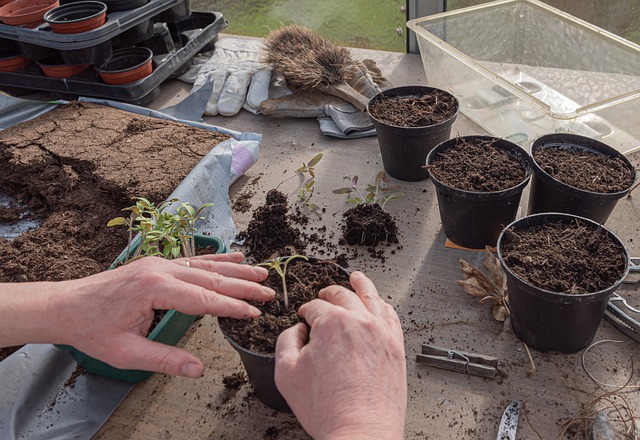There is usually no distinguishing ingredient between potting mix and potting soil and they tend to be used interchangeably. Some products called “potting soil” are actually soil rather than a traditional potting mix, in which case, they are not a good medium for your potted plants. Choose a product labeled as potting mix over one labeled potting soil, if available. So, what is the difference between the two?
Potting soil refers to any growth media which contains dirt, either partially or completely, and which is used to grow plants in a container. Potting mix, however, is any soil-less media which was specifically developed to provide better gardening results inside containers.
Potting soil
Potting soil is any container gardening media which has dirt in it. The dirt could be mixed in with other soil-less materials, or it could entirely make up the potting soil.
Potting soil for indoor plants is often nutrient rich because it has decaying organic matter and minerals, which offer steady nutrition to plants. The potting soil can consist of dirt from the garden and one or more of the materials which are usually employed in the making of potting mixes. A potting mix can also be mixed with dirt, and it will, therefore, turn into potting soil.
Dirt or ordinary soil doesn’t work well when used in containers. It will compact easily, blocking off air circulation and becoming water-logged, which makes it less ideal as a growth medium.
On the other hand, potting soil is usually cheaper than potting mixes, and although the soil may be rich with nutrients, its density is a disadvantage and it makes it less ideal than potting mixes when it comes to container gardening.
Potting soil is very effective for container gardening. Another method is compost. Organic composting waste is great for potting soil.
Potting mix
Potting mix in a strict sense is a soil-less growing medium, which got designed specifically for container gardening. It’s additionally made up of all the right materials to maximize the growth of plants.
A good potting mix includes pine bark or any other compostable organic matter, peat moss for water retention, plus perlite and vermiculite for nutrient, moisture, and drainage management.
The particles are usually larger in size than soil particles to offer the potting mix with better aeration. These particles are also lighter in weight, making it easier for roots to find their way.
Potting mixes can be custom mixed for particular plants or plants in particular stages of growth, such as a seed starting mix for seed starting. You can also get a cactus and an orchid mix, which both offer features to mimic either the cactus’ or the orchid’s natural environments.
Which one to choose?
Choosing the right potting mix with all the right features for container gardening can mean the difference between a plant which is just struggling to survive, and one which is thriving. Potting mix and potting soil are two different types of growing media, with each one providing advantages as well as disadvantages.

It’s important that you always read the label to see what the potting mix or potting soil contains because that’s the only way you’ll be sure. And if the product offers no content list, then it might be a good idea to leave it alone.
A potting mix is definitely your best bet for container gardening, but if you are considering large-scale gardening, raised bed gardening, or filling in low spots in your garden, then you should probably use potting soil.
Source: www.residencestyle.com

